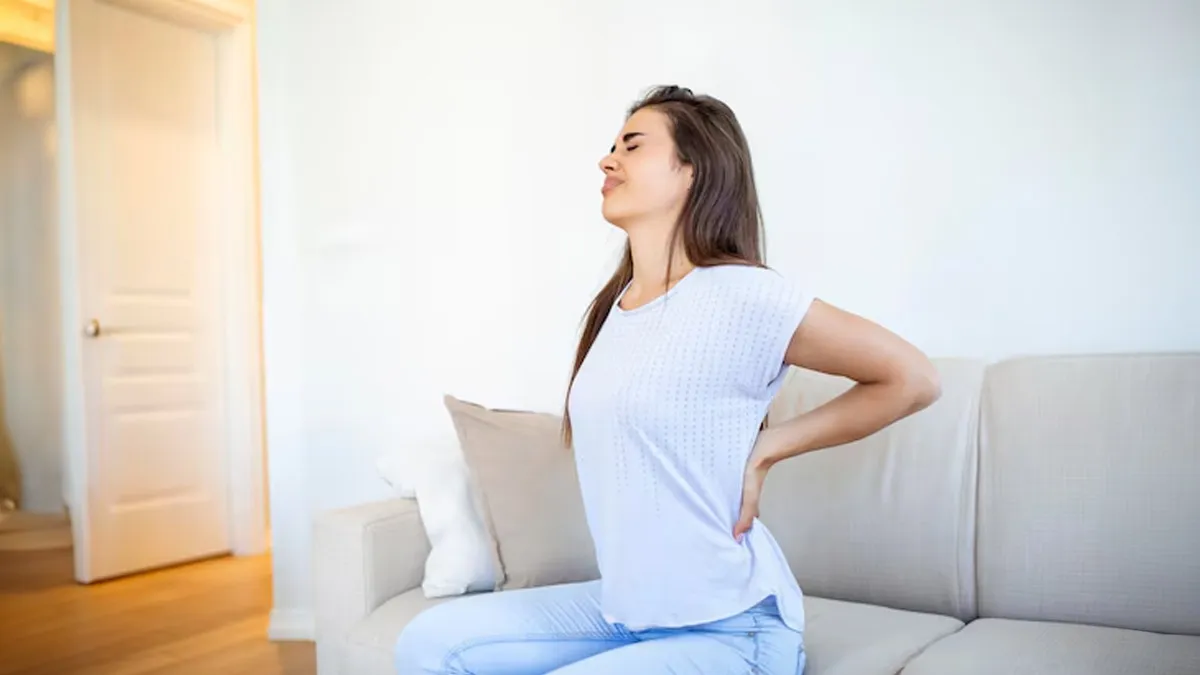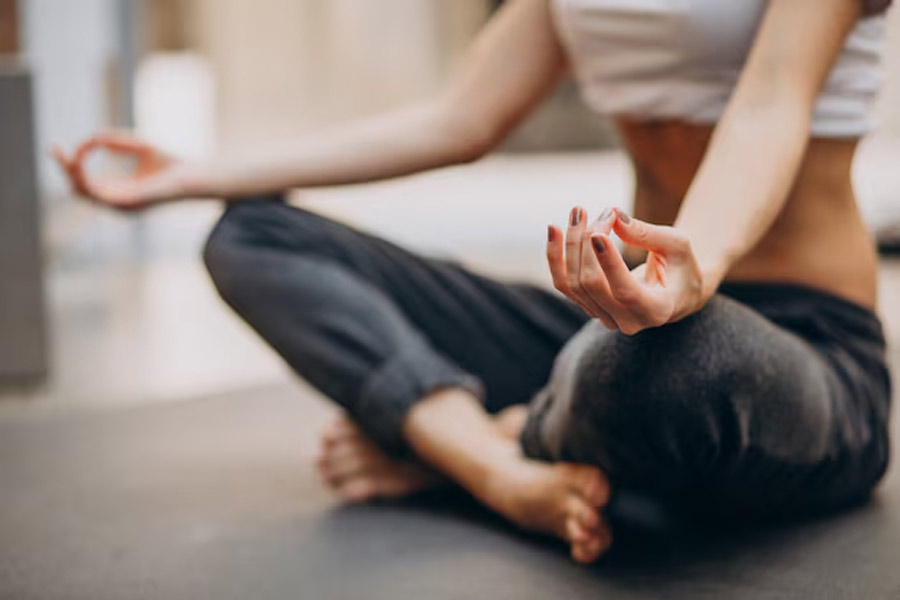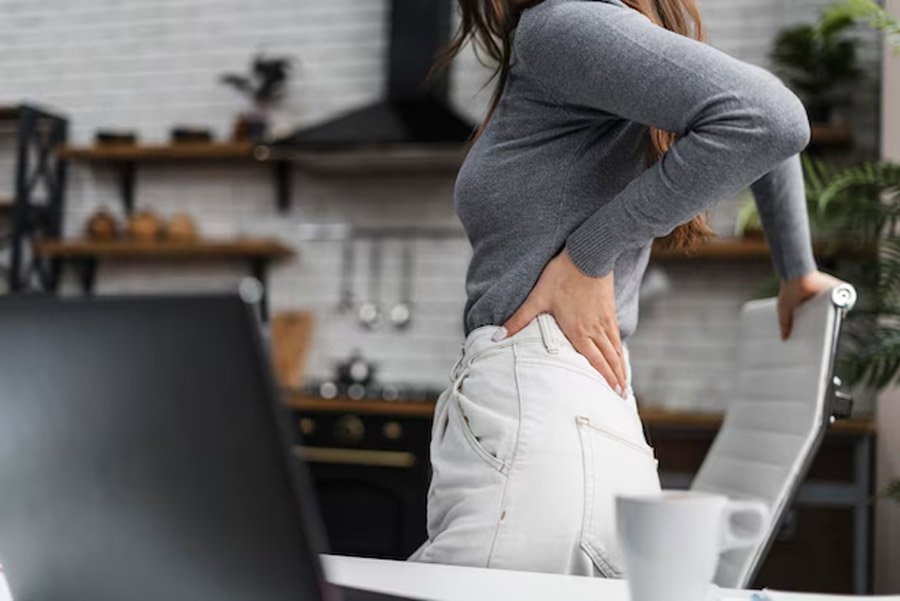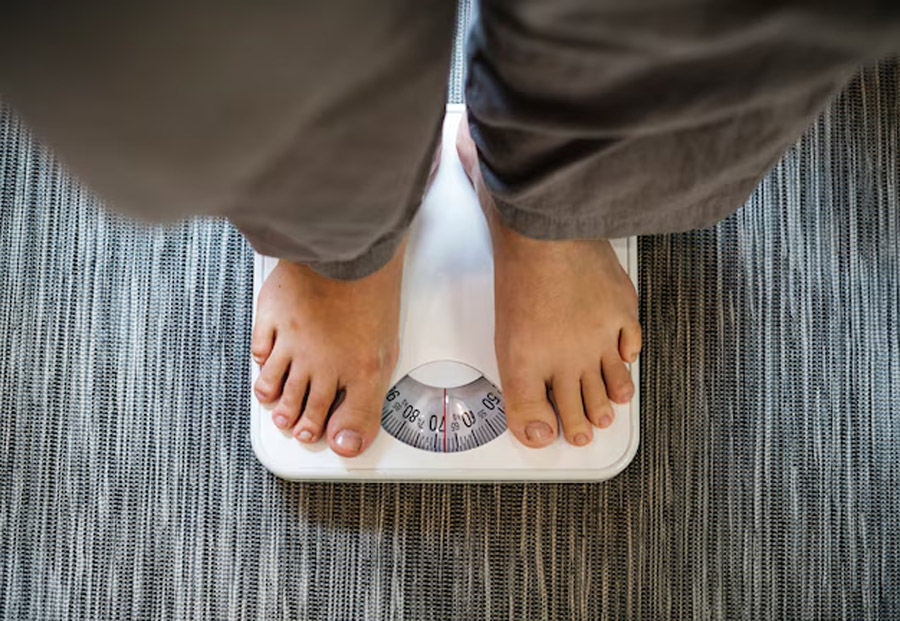
Lower Back Pain: 5 Common Causes, Preventive Tips For Women
Lower Back Pain In Women Common Causes And Preventive Tips: Lower back pain is one of the most common health problems many women face today. Whether it's from sitting too long at a desk, lifting something incorrectly, or just the natural wear and tear that comes with life, it can significantly impact daily activities. In this article, we will tell you in detail about the causes and how taking proactive steps can help you prevent and manage lower back pain effectively.
We spoke with Dr Hari Guruvulu Routhu (PT), a Consultant Physiotherapist at the Centre for Spine and Sports Health (CSSH), to share insights on why lower back pain is such a prevalent issue among women and what preventive measures can help reduce its impact.
Common Causes of Lower Back Pain In Women
1. Postural Issues

One of the most common causes of lower back pain in women is poor posture. Dr Hari Guruvulu Routhu says, “Lower back pain typically affects the area of your spine known as the lumbar region, which is the lower part of your back.” This constant pressure can lead to chronic discomfort and pain.
2. Pregnancy And Childbirth
During pregnancy, the body undergoes numerous changes to accommodate the growing baby. “The growing uterus shifts the centre of gravity forward, creating increased strain on the lower back and causing increased lumbar curvature (lordosis). Relaxin, a hormone released during pregnancy, loosens ligaments in preparation for childbirth but can destabilise the spine,” shared Dr Hari Guruvulu Routhu. After childbirth, the body continues to adjust, and many women experience lingering back pain due to weakened core muscles and pelvic floor issues.
1
2
3
4
3. Excess Weight Strain
Another factor is obesity and excess weight. The expert explains, “Excess body weight, particularly around the abdominal area, increases the load on the lumbar spine. This additional pressure contributes to premature disc degeneration, leading to conditions such as herniated discs and chronic lower back pain. The mechanical stress from excess weight can accelerate wear and tear on spinal structures.”
4. Improper Lifting Techniques
Many women, whether at home or in the workplace, engage in activities that require lifting. The expert says, “Many women perform daily activities that require lifting, bending, and repetitive motions, such as lifting groceries, cleaning, or carrying children. Poor lifting techniques can cause acute injuries or long-term spinal strain, especially when combined with already weakened core musculature.” Over time, improper lifting habits can lead to chronic back issues.
5. Pelvic Floor Dysfunction
After childbirth, weakened pelvic floor muscles can make it harder for your core to stay stable, putting extra strain on your lower back. Since these muscles are so important for supporting your spine, their weakness can affect the overall stability of your lower back. This can lead to ongoing discomfort and make you more prone to injury.
Don't miss: 6 Stroke Warning Signs You Should Know About, As Explained By Health Expert
Lower Back Pain For Preventive Tips
As Dr Hari Guruvulu Routhu explains, while some factors may be unavoidable, there are several things women can do to prevent or reduce lower back pain:
1. Mindful Movement Therapy

Incorporating mindfulness into movement helps women become more aware of their bodies, which can prevent poor posture and the strain it causes. Dr Hari Guruvulu Routhu suggests that, “This approach emphasises intentional movement patterns that respect the spine's natural alignment. By paying close attention to how movements feel and affect the body, women can catch potentially harmful patterns before they cause damage and develop healthier alternatives.”
2. Strength Training
Engage in exercises that strengthen your core, such as planks, bridges, and abdominal exercises. A strong core helps stabilise the spine and reduces the burden on the lower back. Our expert explains that, “Rather than isolated exercises, functional movements that mimic real-life activities strengthen the entire posterior chain (back, glutes, hamstrings) as an integrated unit. This approach ensures that the body learns to distribute force appropriately during daily activities, reducing the risk of injury from common movements like bending, lifting, or twisting.”
Don't miss: Arthritis In Young People: Causes And 5 Preventative Tips, As Suggested By Doctor
3. Nutrition For Spinal Health

An anti-inflammatory diet full of omega-3 fatty acids, antioxidants, and calcium can play a big role in supporting tissue repair and strengthening bones. Staying properly hydrated is also key, as it helps keep the fluid balance in your intervertebral discs, which is essential for disc health. While the link between nutrition and spinal health is often overlooked, what we eat directly affects the quality of our tissues, how well our bodies recover, and how sensitive we are to pain.
4. Technology-Assisted Posture Training
Next is opting for smart wearable devices that provide real-time feedback about posture. Dr Hari Guruvulu Routhu advises that, “These devices gently vibrate when detecting slouching or other compromising positions, creating immediate awareness and opportunity for correction. This technological reinforcement helps build new postural habits more quickly than traditional methods.”
Note: If you experience persistent pain, it's always a good idea to consult with a physiotherapist. Taking care of your back today can lead to a more comfortable and pain-free tomorrow.
For more such stories, stay tuned to HerZindagi.
Image credit: Freepik
Also watch this video
Herzindagi video
1
2
3
4
